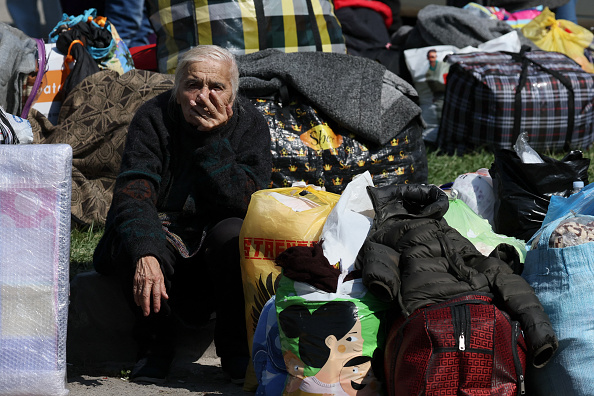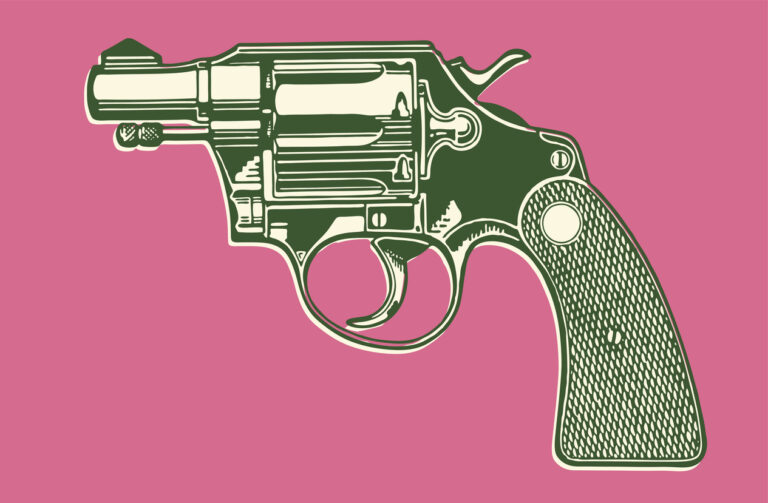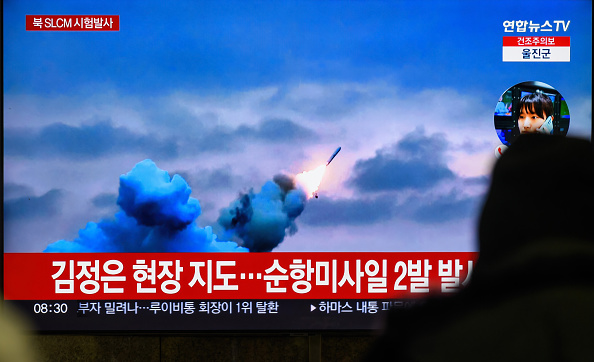Homens do Mato and Black Genocide
How language and symbols that construct Black Brazilians as “the other” create the structures of racism that sustain a genocidal campaign against Black citizens throughout the entire country.
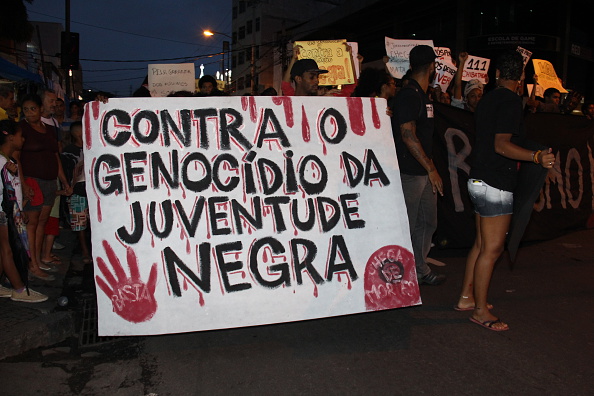
In December 2021, Roberto Martins de Melo Junior, a young Black man, was killed in Brazilian police custody. The eighteen-year old died in Cuiabá, the capital of the western state of Mato Grosso, in a low-income area just three miles from Santa Rosa, the city’s wealthiest neighborhood. A police patrol murdered Roberto Martins, also known as Juninho, after catching him riding motorcycles with friends. The victim and his friends were enjoying themselves following an illicit but popular motorcycle trend. They were showing off “dar grau,” or motorcycle tricks, especially “wheelies” on lightly-trafficked roads. Many of them did not have driver’s licenses and scampered away when the police arrived.
According to the region’s newspaper, Olhar Direto, “To try to hide, Roberto would have rushed into a dark space between two houses. This was where he laid down next to his motorcycle, where he would have been beaten and then shot in the chest.” Neighbors later corroborated these details and reported seeing police officers beating up someone nearby.1
Roberto’s family and friends repeatedly protested that he had two jobs, had no ties with criminal activities or groups, and had no gun in his possession. But to no avail. Meanwhile, the police claimed that Roberto pointed a 38mm pistol at them. Yet the police failed to follow their own procedures in handling the alleged evidence. The standard process whereby the weapon is collected by the Civil Police or the Forensic Medical Institute was not followed. Instead, the gun was taken by the military police officers and handed to the 10º Batallion of the military police. And to this day, the murder of Roberto has not been investigated, and it probably never will be.
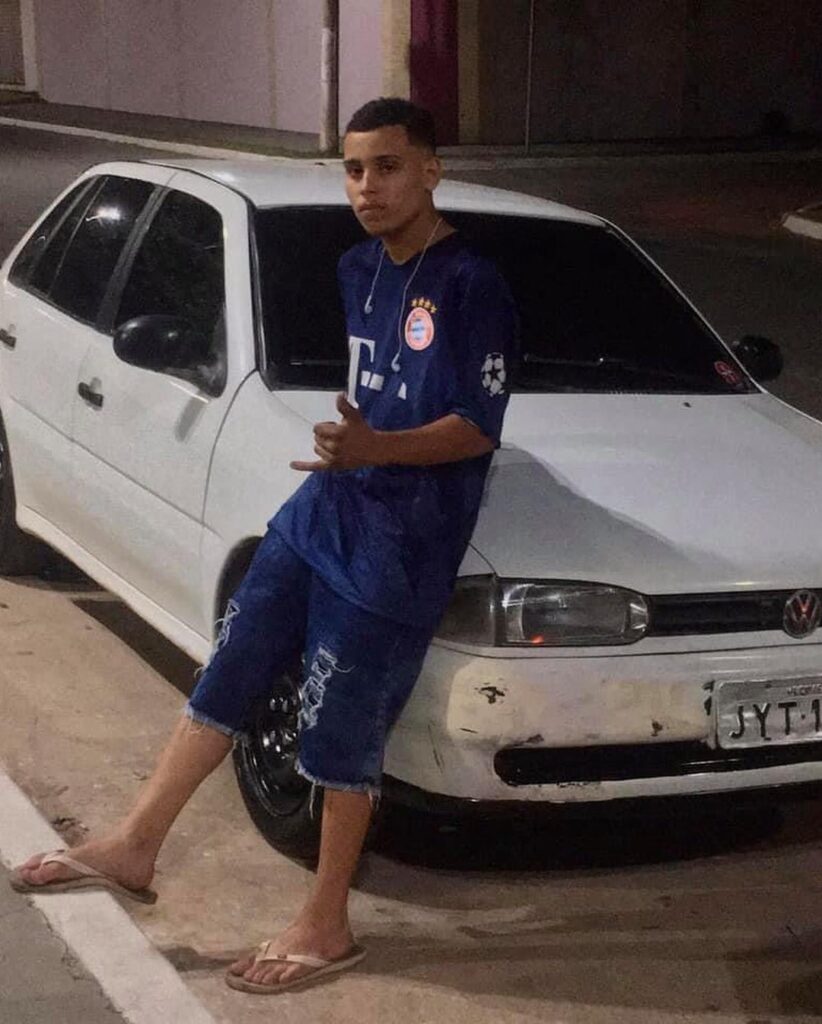
The story of Roberto is far from an exception in Brazil. Stories of cold-blooded murder perpetrated by police officers against young Black men are part of daily news in Brazil. In a country where 56.1% of the population identifies as Afro-descendant, a young Black person is killed every 23 minutes. In Bahia, Ceará, Piauí, Pernambuco, Rio de Janeiro, and São Paulo, the police kill a Black person every 4 hours.2
The horror of police violence against young Black men is spread throughout Brazil. In states like São Paulo and Rio de Janeiro, this brutality becomes national news, but killings that take place in the interior of Brazil continue to be overlooked—even though those places have the highest number of deaths caused by the police. In 2020, the northern state of Amapá had the highest death rate from police encounters in the country. There, such violence claimed the lives of 13 per 100,000 inhabitants (1.3%), whereas the Brazilian average was 3 per 100,000 inhabitants (0.3%).3
Lying in the central-western region of the country, the state of Mato Grosso is not far behind. The 16th most populous Brazilian state, it ranks 8th in police killings. According to the Violence Monitor on Police Lethality and Victimization, published in 2021, the most significant growth in deaths perpetrated by active police officers in Brazil occurred in Mato Grosso: killings increased there by 83% between 2019 and 2020.
Genocide, a term coined by the Polish Jewish lawyer Raphael Lemkin and classified as a punishable crime by the United Nations since 1948, is defined as a series of acts committed with the intent to destroy, in whole or in part, a national, ethnical, racial, or religious group. Media silence about what can only be understood as Black genocide has enabled state impunity in Brazil.
This has created a permissive environment for police brutality. But that’s not all. The public has turned a blind eye to what we might call symbolic and discursive violence, a set of ideas, images, and practices, that normalize and institutionalize the notion that Black bodies are inherently alien, hostile, threatening, and violent. Language and symbols that construct Black Brazilians as “the other” create the structures of racism that makes possible and sustain a genocidal campaign against Black citizens in all regions of Brazil.
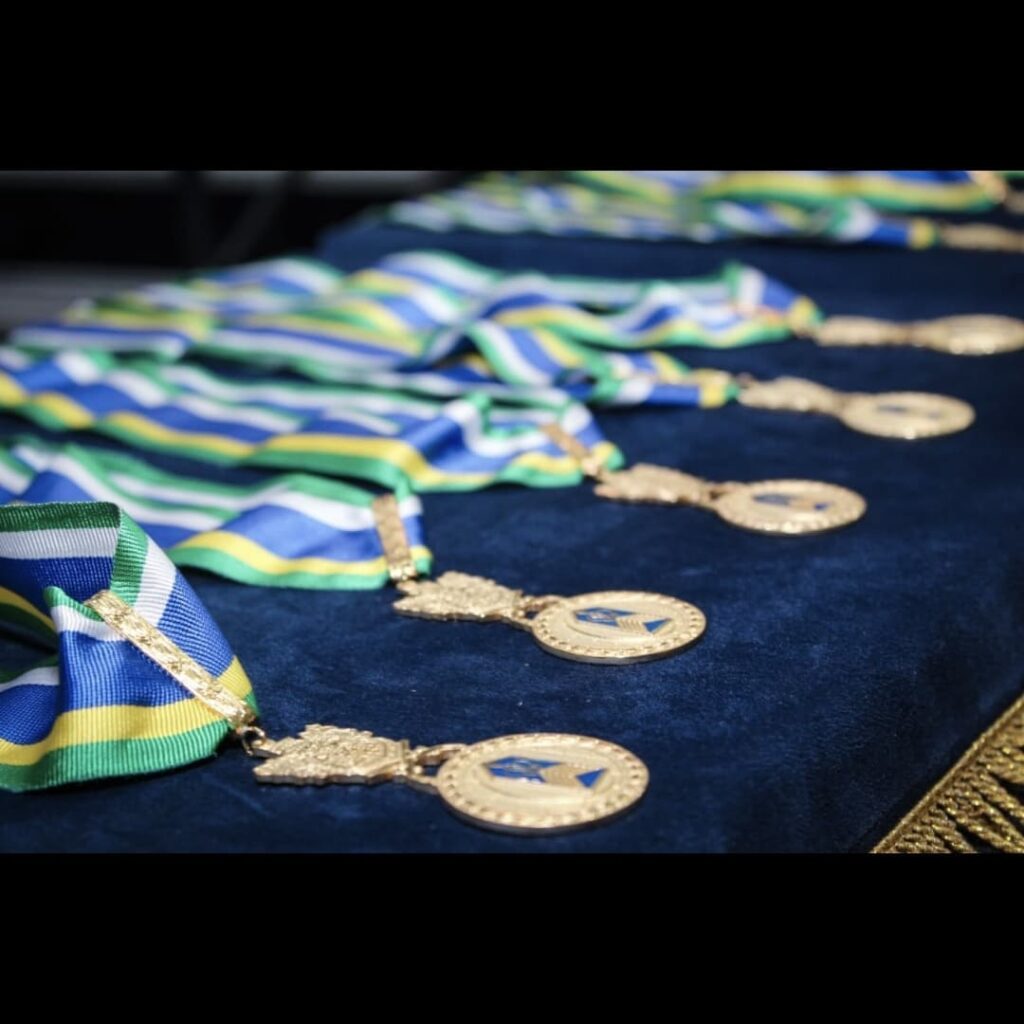
Just six days after Roberto’s murder, the Military Police of Mato Grosso (PMMT) bestowed accolades on 166 civil and military personnel. The awarded seven different distinctions that night. Among them, the most important was the Homens do Mato (“Men of the Bush”) medal, the highest honor given by the PMMT.
What’s crucial to understand here in connection with anti-Black violence in Mato Grosso is that the PMMT named the award after the first policing institution in the state, which had been founded in 1835 to capture enslaved individuals who fled from bondage. Moreover, these authorities were also responsible for destroying the communities formed by runaway enslaved communities, or quilombos.
Quilombos vs Homens do Mato: A Legacy of Black Resistance and Suppression in Mato Grosso
Official celebration of a slave patrol shows how, structurally, such violence is part of the formation and maintenance of Mato Grosso. Recourse to this symbol is so significant to the PMMT that its senior officials have adopted the name for its its symphony orchestra–and its scholarly journal on public safety. Its intent is clearly on display via the logo of the journal, which shows a coat of arms with figures from nineteenth-century Brazil. The image depicts the 1st Battalion of PMMT positioned between an indigenous man and a bandeirante, a figure symbolizing adventurers who traveled from São Paulo to the interior of Brazil in search of gold and indigenous people to enslave, leaving behind a trail of blood and destruction.
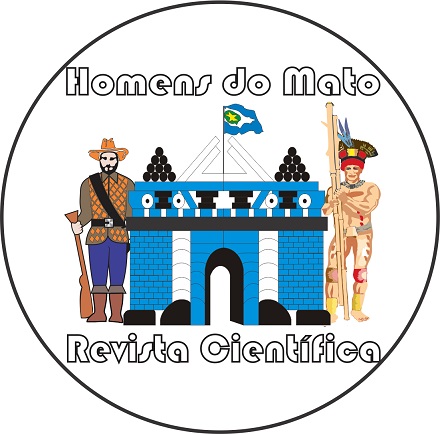
The logo presents the dominant narrative glorifying the image of the bandeirantes. It reinforces the origin myth of the hinterlands of Brazil, which silences and disregards the history and existence of Black communities, which, despite the systemic violence and cruelty of the State, still found places to exist and resist. Among these communities of resistance and existence, the Quilombos were independent micro-societies formed by enslaved groups who had fled bondage.4
In Mato Grosso, alone, there are records of at least twenty different Quilombos, the majority of them inhabited by Black and indigenous groups. The existence of societies formed and ruled by Black individuals, with different systems of power, commerce, and protection, was too dangerous for the perpetuation of the status quo of Brazilian slave society since it challenged the white colonialist narrative of primitiveness, savagery and otherness that had been attached to the existence of African and Afro-Brazilian lives in Brazil. Almir Balieiro argues that the PMMT Homens do Mato symbolism was intended to signal continuity with the capture of formerly enslaved individuals and the destruction of Quilombos through means closely related to counterguerrilla tactics.5
From its creation in 1835, Homens do Mato offered money, power, protection, and social ascension to poor and free men who did not fit into the dualistic social structure of enslaved persons and enslavers that made up the Brazilian slavery system. Crucially, the law founding the institution promised recruits “rewards for capturing slaves.”6
Its members were thus the front line for maintaining the slaveholding system. They were the tools utilized by the state to enforce violence and the re-enslavement of Black individuals who had freed themselves from the horrors of slavery by running away. In 1844, the institution was renamed “Corpo Municipal Permanente” and passed through different titles and names until 1977, when it became the “Policia Militar de Mato Grosso” or PMMT.
Legacies of Oppression and Violence: Policing Black Bodies Across the Americas
Police institutions created primarily to constrain the movement of Black bodies and soothe the enslavers’ fears are spread throughout the Americas. In the decree that founded the first police institution of São Paulo, articles 9 and 11 regulate the financial matters related to the destruction of the Quilombos and the catching of enslaved individuals, similar to the ones we see in Mato Grosso:
“Art 9º – When the service is aimed at attacking quilombos, bandits or any other situation involving a danger to life, the daily wage shall be doubled or even tripled, at the discretion of the Authority assigning the service. If such service is requested by a slave owner, they shall be responsible for paying the days of service according to the aforementioned arbitration, just as any owner shall be responsible for payment when a slave is apprehended by any Guard.”
“Art 11º – In order to compensate the Chambers for such expenses, the respective amounts that slave owners are obligated to pay will be allocated to the coffers of the Municipal Councils, relieving them of the obligation imposed by Article 9. The Chambers shall establish through regulations the specific amounts, which shall be twice the value if the arrest is made without an escort, and three times the value if an escort is involved or if it is an attack on quilombos.”
Similar stories have been researched in other countries of the Americas. In the U.S., police institutions also inherited and perpetuated the modus operandi of targeting Black bodies. This began already in 1704, with the implementation of the first “slave patrols” in South Carolina.
Different institutions have approached their history as upholders of slavery and colonialism in varying ways. Nonetheless, the extension of symbolic and discursive violence perpetrated by the Military Police of Mato Grosso stands out in comparison to other Brazilian states. Elsewhere the authorities have adopted medals with dubious characters, enslavers, and officers known for their history of violence. For instance, the Military Police of São Paulo titled one of its medals after its patron Brigadeiro Tobias de Aguiar, an oligarch, politician, land owner, and enslaver in Sorocaba, São Paulo. In homage to a bloody character of a more recent past, the Military Police of Pará named one of its medals after Coronel Fontoura, who in 1897 carried out a massacre against the residents of Canudos. In homage to a bloody character of a more recent past, the Military Police of Pará named one of its medals after Coronel Fontoura, who in 1897 carried out a massacre against the residents of Canudos.7
Nonetheless, the explicit homage to an institution responsible for the re-enslavement of Black individuals is unique to Mato Grosso. The exaltation of “Homens do Mato” as worthy of honor and prestige, interwoven with the deliberate valorization of its actions, reveals how violence towards Black bodies, especially young Black men, lies at the foundation of the state of Mato Grosso.
In this connection, it is no coincidence that the law establishing the Homens do Mato award in 1984 was the work of the Brazilian military dictatorship (1964-1985). Nonetheless, as noted by Jaime Amparo Alves, the modus operandi of the military dictatorship, which saw the elimination of “internal enemies” as a form of social pacification, lingers up to the present day in the interaction between the military police and communities in low-income areas.
The Brazilian state’s necropolitics toward Black youth is not solely a result of the legacy of slavery. The genocide of the Black population in Brazil is a state of violence that reorganizes itself in discourses and political actions that marginalize the lives of Black individuals who live in low-income areas by claiming to wage “wars” on crime and drugs.8
This role has earned the PMMT immense appreciation in the eyes of the region’s middle class and elite. The violence perpetrated by the police against Black youth is often dismissed as a necessary price to pay for Mato Grosso’s frontier geography and its exposure to the regional drug trade. Still, for all of the dangers posed by armed drug traffickers, in 2020, 130 civilians were murdered for every police officer killed in the state.9
In 2023, the Mato Grosso state prosecutor, Vinícius Gahyva Martins, gave a statement critiquing the number of police encounters that resulted in murder in the State. He asserted that in Cuiabá, the State’s capital and its metropolitan region, one out of every four homicides was caused by police intervention.
The murder of Roberto, unfortunately, was not an isolated case but part of a pattern of racism and impunity that permits authorities to treat the bodies of Black young men as a threat. In 2017, João Vitor Alves de Oliveira, a 20-year old, and Hugo Vinicius da Silva Salomé, 19, were last seen being taken away by a police car; ten days later, their bodies were found buried and wrapped in plastic bags. In 2020, Jonathan da Silva Rosário, a 23-year old was asked to stop by two police officers while riding his motorcycle from his girlfriend’s house in Chapada dos Guimarães; when he did not stop, police shot him. In 2023, Pablo Ferreira de Carvalho da Silva, 25, was having an episode of psychosis when his mother called the police to help contain him. The officers shot the young man six times because he had a pickaxe in his hand.10
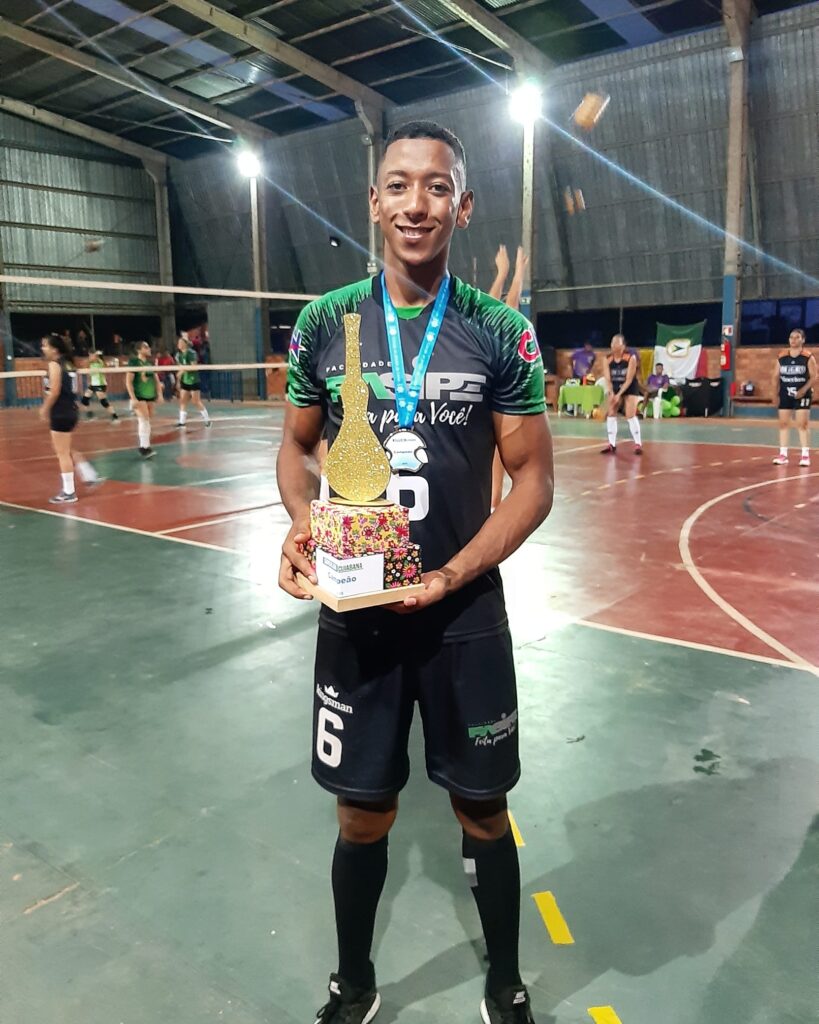
“A good thug is a dead thug:” Death Squads and the discourse of crime-fighting heroes in Mato Grosso
One of ex-president Jair Messias Bolsonaro’s most famous slogans was, “A good thug is a dead thug.” The Brazilian right proudly adopted the catchphrase, which has been repeated by Bolsonaro’s followers during discussions of the criminal and judicial system, especially regarding human rights for inmates and individuals in police custody. In a country with severe problems regarding theft, robbery, and murder, fear drives many citizens to rely on discourses of “heroes” and “villains,” even though the reality of crime in Brazil is enormously complex and involves local, domestic, and international forces.
Nonetheless, the discourse that the institution of the military police also upholds empowers police officers to take action by their own hands and “implement justice.” They commonly act as police, prosecutor, and judge and decide when the sentence should be imprisonment or death. On July 26th, 2022, for example, the local news wrote an article about Manoel Santos da Silva, a police officer arrested for creating a death squad in Brasnorte, a city in the interior of Mato Grosso. According to the reports, Manoel would boast that no one had killed more “thugs” than him. In 2020, Manoel and three other men killed Caíque da Conceição de Souza in an ambush, with multiple shots, because Manoel had not agreed with the judicial ruling to release Caique after he had been seized with drugs and ammunition.
Similarly, in 2022, the military police of Mato Grosso were under investigation in connection with a death squad formed by 62 military police officers. According to investigators, the group acted for three years—from 2017 to 2020—and assassinated 23 civilians. The victims were lured into an ambush by an informant calling them to participate in a supposed heist. When the victims arrived at the chosen place, they were murdered by the police officers in a staged confrontation. The case is still under investigation, and the suspects are free and continue working as police officers.
The military police issued a note on the local news portal, Midia News claiming, “It is important to emphasize that the maintenance of security and public order demands a combative posture and, in this endeavor, we will always confront crime and defend our heroes.” The discourse of crime-fighting heroes in Mato Grosso has spared the Military Police in the region any critique, however severe the situation may be. Since its foundation in 1748, the government of Mato Grosso has deployed this discourse and symbology hand in hand with violence towards Black bodies that continue to be silenced, overlooked, and disregarded.
The death squads formed by police officers have a long history in Brazil and Mato Grosso. Colonel Tito Lívio de Caravellas, for instance, had an extensive record in the PMMT, reaching the highest rank in the institution. From 1984 to 1986, his name was on the local news with three other police officers of different ranks. They were investigated for the kidnapping and murder on August 26, 1983 of four underage boys known as Nhonhozinho, Milsão, Milinho, and Branco. In 1984, the judge responsible for the case, Antonio Humberto Cesar, claimed that “the investigation was not closed by the police, but fell into oblivion in a drawer somewhere.”11
In 1986, the case returned to the news due to Mato Grosso’s attorney general, Leônidas Duarte Monteiro, who reopened the case as part of a broader investigation into the existence of death squads tied to the PMMT. As one journalist noted at the time, “The boys, the mothers never saw again, but the officers are still on duty. Some have even been promoted.” One of them was Caravellas, who was soon promoted from lieutenant to captain.12
In September 1986, captain Caravellas reported a new initiative within the Military Police of Mato Grosso, a night patrol called Homens do Mato. The operation focused on low-income areas in Cuiabá and its environs. It ostensibly included inspecting vehicles that transited through those regions, registering critical spots, and “protecting” neighborhoods from acts of violence. However, the discursive and active violence were on display here once again. The hunt for Black bodies no longer took place in the wilderness, as the name Homens do Mato suggests, but in low-income areas, spaces that are occupied predominantly by Black communities.13
Jaime Amparo Alves argues that “[T]he Black body appears, therefore, as the catalyst of a type of death (homicidal violence) that falls preferentially, though not exclusively, on blacks, paving the way for the victimization of other groups. White victimization would be, in this sense, a consequence of the trivialization of Black mortality.”The necro power against the Black population passes through continuous regeneration. Through those shifts, it dialogues with its past in different forms, on a cycle of violence that might allow some elements to change but continues to have the same target.14
The homage paid by the Military Police to the Homens do Mato and the unwavering support of all the government authorities who proudly flaunt such “honor” perpetuates, through symbolism and discourse, the narrative that determines the history and the lives of Black people in Mato Grosso, framing them as inherently insignificant and worthy only of violent treatment. The marginalization and silencing of Black history are directly related to the banalization of Black existence. Silence surrounding the events of the past and present is not by chance but part of a deliberate system. It has served as a tool of permissiveness that allows Black genocide in Brazil. Nonetheless, the young men presented to you in this text were more than just a number, a causality, an “innocent,” or a “criminal.” They were brothers, friends, and sons.
Roberto Martins de Melo Junior’s sister, Mariana Bento insisted, “I am seeking justice for my brother.” Each young man presented here meant the world to somebody, and this world was shattered by a system that has the death of Black citizens as its foundation, a necropolitical state that built and continues to perpetuate its power on the “war on crime” and an institution that through a historical symbology of violence, oppression, and death sees the body of young Black men as shooting targets.
Nina Maria de Meira Borba is a PhD student in the Department of History at Stanford University.
Works Cited
Amparo Alves, Jaime. “Topografias Da Violência: Necropoder e Governamentalidade Espacial Em São Paulo.” Revista do Departamento de Geografia – USP 22 (2011): 108–34.
Azevedo, Jose Eduardo de. “Polícia Militar: A Mecânica Do Poder.” Revista Sociologia Jurídica, no. 7 (2008). https://sociologiajuridicadotnet.wordpress.com/policia-militar-a-mecanica-do-poder/.
Balieiro, Almir. “Dos Homens Do Mato Aos Homens e Mulheres Da Cidade: Por Uma Escrita Dentro Da Nova História Sobre a Trajetória Da Polícia Militar Em Mato Grosso.” Revista Territórios e Fronteiras 2, no. 2 (2009).
Bueno, Samira, David Marques, and Dennis Pacheco. Publication. As Mortes Decorrentes de Intervenção Policial No Brasil Em 2020. Fórum Brasileiro de Segurança Pública, 2020.
“Crimes Do ‘Esquadrão’ Serão Apurados Em Oito Inquéritos.” Jornal Do Dia, April 17, 1986.
“Inquérito Errado.” Jornal do Dia, April 18, 1986.
“Jovem Morto Pela PM Em Cuiabá Atuou Na Seleção Sub-17 de Portugal.” Unica News, February 12, 2023. https://www.unicanews.com.br/cidades/jovem-morto-pela-pm-em-cuiaba-atuou-na-selecao-sub-17-de-portugal/90970.
“Jovens Que Estavam Desaparecidos São Achados Mortos Em Sacos Em MT.” G1 Mato Grosso, January 20, 2017.
Kipper , Cleto, and Jonathan Cosme. “Comandante Geral Da PM Rebate Acusações Sobre Ocorrências Que Terminaram Em Mortes Em MT.” G1 Mato Grosso, February 16, 2023. https://g1.globo.com/mt/mato-grosso/noticia/2023/02/16/comandante-geral-da-pm-rebate-acusacoes-sobre-ocorrencias-que-terminaram-em-mortes-em-mt.ghtml.
Lopes, Kessillen. “Jovem é Morto Por PMs Na Rua Em MT; Família Cita Despreparo e Faz Ato Em Protesto e Polícia Alega Que Ele Não Parou Moto.” G1 Mato Grosso, October 1, 2020.
“Mais de 60 PMs de Mato Grosso São Acusados de Planejar Emboscadas Para Executar Suspeitos de Crimes.” Fantástico, April 17, 2022. https://g1.globo.com/fantastico/noticia/2022/04/17/mais-de-60-pms-de-mato-grosso-sao-acusados-de-planejar-emboscadas-para-executar-suspeitos-de-crimes.ghtml.
Mbembe, Achille. Necropolitics. Durham and London: Duke University Press, 2019.
Mendes, Fabiana, and Pedro Coutinho. “Amigos Afirmam Que Jovem Morto Pela PM Tinha Dois Empregos e Não Estava Armado.” Olhar Direto, December 15, 2021. https://www.olhardireto.com.br/noticias/exibir.asp?id=497170¬icia=amigos-afirmam-que-jovem-morto-pela-pm-tinha-dois-empregos-e-nao-estava-armado&edicao=3.
Mendes, Fabiana. “Sargento Da PM é Preso Por Criar Grupo de Extermínio e Coordenar Diversas Execuções.” Olhar Direto, July 26, 2022. https://www.olhardireto.com.br/noticias/exibir.asp?id=506378¬icia=sargento-da-pm-e-preso-por-criar-grupo-de-exterminio-e-coordenar-diversas-execucoes&edicao=1.
Moraes, Kethlyn. “MT Tem o Maior Índice de Aumento de Mortes Por Policiais Do País Em 2020, Segundo Monitor Da Violência.” G1, April 22, 2021. https://g1.globo.com/mt/mato-grosso/noticia/2021/04/22/mt-tem-o-maior-indice-de-aumento-de-mortes-por-policiais-do-pais-em-2020-segundo-monitor-da-violencia.ghtml.
Senado Federal, CPI do Assassinato de Jovens: Relatório final § (2016).
“Sequestro de Menores Ainda Sem Solução.” Jornal Do Dia, October 21, 1984.
“Uma Pessoa Negra é Morta Pela Polícia a Cada Quatro Horas.” Rede de Observatórios de Segurança, December 14, 2021. http://observatorioseguranca.com.br/.
UN General Assembly. Prevention and punishment of the crime of genocide, 9 December 1948, A/RES/260. https://www.un.org/en/genocideprevention/genocide.shtml.
Vittorazzi, Davi. “TJ Manda Soltar Todos Os PMs Presos Na Operação Simulacrum.” Midia News, April 2, 2022. https://www.midianews.com.br/judiciario/tj-manda-soltar-todos-os-pms-presos-na-operacao-simulacrum/419667.
footnotes
- 1 “Para tentar se esconder, Roberto teria entrado em um espaço escuro entre duas casa. Teria sido nesse local que ele se deitou ao lado da motocicleta, onde teria sido agredido e posteriormente morto com um tiro na região do peito.” Fabiana Mendes and Pedro Coutinho, “Amigos Afirmam Que Jovem Morto Pela PM Tinha Dois Empregos e Não Estava Armado,” Olhar Direto, December 15, 2021, https://www.olhardireto.com.br/noticias/exibir.asp?id=497170¬icia=amigos-afirmam-que-jovem-morto-pela-pm-tinha-dois-empregos-e-nao-estava-armado&edicao=3.
- 2 Senado Federal, CPI do Assassinato de Jovens: Relatório final § (2016), 32; and “Uma Pessoa Negra é Morta Pela Polícia a Cada Quatro Horas,” Rede de Observatórios de Segurança, December 14, 2021, http://observatorioseguranca.com.br/.
- 3 Samira Bueno, David Marques, and Dennis Pacheco, As Mortes Decorrentes de Intervenção Policial No Brasil Em 2020 (Fórum Brasileiro de Segurança Pública, 2020), 61.
- 4 The Quilombos were a Brazilian phenomenon similar to the Palenques, Cumbes, Maroons, and Grand Marronage that took place in the Spanish, English, and French Americas. See Almir Balieiro, “Dos Homens Do Mato Aos Homens e Mulheres Da Cidade: Por Uma Escrita Dentro Da Nova História Sobre a Trajetória Da Polícia Militar Em Mato Grosso,” Revista Territórios e Fronteiras 2, no. 2 (2009), 346.
- 5 “Além dos vencimentos de que trata o artigo 2°, ficam pertencendo aos indivíduos deste Corpo, as tomadas de escravo estipulado no antigo regimento de Capitão do Mato, que lhes serão pagos pontualmente pelos respectivos senhores.” “Lei Provincial nº 30, de 05 de Setembro de 1835.” Assembleia Legislativa do Estado de Mato Grosso Secretaria de Serviços Legislativos, https://www.al.mt.gov.br/storage/webdisco/leis/lim-30-1835.pdf.
- 6 The Quilombos were a Brazilian phenomenon similar to the Palenques, Cumbes, Maroons, and Grand Marronage that emerged in the Spanish, English, and French Americas.
- 7 Almir Balieiro, “Dos Homens Do Mato Aos Homens e Mulheres Da Cidade: Por Uma Escrita Dentro Da Nova História Sobre a Trajetória Da Polícia Militar Em Mato Grosso,” Revista Territórios e Fronteiras 2, no. 2 (2009), 346. José Eduardo de Azevedo analyzes how Brigadeiro Tobias de Aguiar’s interests deeply influenced the formation of the Military Police of São Paulo as an institution that upheld the interest of the slave society in its region. See Jose Eduardo de Azevedo, “Polícia Militar: A Mecânica Do Poder,” Revista Sociologia Jurídica, no. 7 (2008), https://sociologiajuridicadotnet.wordpress.com/policia-militar-a-mecanica-do-poder/.
- 8 The principle of necropolitics is the mechanization of death and the subjugation of life to acquire and maintain power through a continuous stimulation of a war and state of exception, justified by the opposition against a common enemy. See Achille Mbembe, Necropolitics (Durham and London: Duke University Press, 2019), 82.
- 9 Samira Bueno, David Marques, and Dennis Pacheco, As Mortes Decorrentes de Intervenção Policial No Brasil Em 2020 (Fórum Brasileiro de Segurança Pública, 2020), 130.
- 10 “Jovens Que Estavam Desaparecidos São Achados Mortos Em Sacos Em MT,” G1 Mato Grosso, January 20, 2017; and Kessillen Lopes, “Jovem é Morto Por PMs Na Rua Em MT; Família Cita Despreparo e Faz Ato Em Protesto e Polícia Alega Que Ele Não Parou Moto,” G1 Mato Grosso, October 1, 2020.
- 11 “Sequestro de Menores Ainda Sem Solução,” Jornal Do Dia, October 21, 1984, 8.
- 12 “Crimes Do ‘Esquadrão’ Serão Apurados Em Oito Inquéritos,” Jornal Do Dia, April 17, 1986, 4-5; and “Inquérito Errado,” Jornal do Dia, April 18, 1986, 3.
- 13 “Policia Militar Inicia Comemorações,” Diário Oficial do Estado de Mato Grosso, September 1, 1986, 1.
- 14 Jaime Amparo Alves, “Topografias Da Violência: Necropoder e Governamentalidade Espacial Em São Paulo,” Revista Do Departamento de Geografia – USP 22 (2011): 123.

